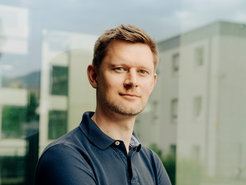Max Planck Research Highlight: Swarming immune cells
The MPG and the “Forschungsquartett” podcast feature Tim Lämmermann and his research on swarming innate immune cells
Articles in “MaxPlanckResearch” as well as the 2021 yearbook highlights of the Max Planck Society and a podcast episode on detektor.fm feature Tim Lämmermann’s research on neutrophil granulocytes. Since 2014, the Max Planck group leader has investigated how immune cells chase pathogens in swarms. Interestingly, the cells show behavior that biologists are familiar with: the Asian honey bee swarms. An overview.
Article: Attracting the swarm

The science magazine MaxPlanckForschung covers research at the Max Planck Institutes and aims to present scientific topics of the MPG in a vivid and easy-to-understand manner. Each magazine issue focuses on a specific topic. The editors have chosen to focus on “swarms” and “swarming behavior” for the current issue. With the help various research projects at three MPIs, they shed light on swarming rules, their occurrence in nature, and much more.
One article takes a closer look at the swarm-like formations of immune cells that circulate in our bodies and hunt in infected tissues to ingest, kill, and digest harmful pathogens. These so-called neutrophil granulocytes get investigated by a research team in Freiburg led by Tim Lämmermann. He reports in the comprehensive article what needs to happen to form these clusters and what signaling processes dissolve the swarms.
Podcast: Swarms & swarming immune cells
In addition to the MPG feature on swarms and swarm behavior, the team of detektor.fm talks to Tim Lämmermann, among others, about his research at the MPI in an extended episode of the podcast “Forschungsquartet” (only available in German). However, the episode also deals with more swarm-related research questions: How can mass panic be prevented in large crowds? Why do fish swim in swarms? Therefore, you can listen to interview segments ethnologist Mehdi Moussaid from the MPI for Human Development in Berlin and Iain Couzin from the MPI for Behavioral Biology.
2021 MPG Research Highlight: Swarming phagocytes
Every year, the Max Planck Society publishes a scientific research report as a digital yearbook. The yearbook contains articles from different research groups at all institutes and bundles the great variety of research carried out at the more than 80 Max Planck Institutes. From these reports, the MPG's communications department has picked 15 contributions as highlights for 2021, which will be published in a revised print version. Among them is this year's report by research group leader Tim Lämmermann, who works with his laboratory on single-cell and population dynamics of immune cells. His article deals with the molecular start-stop system to self-control swarm activity of innate immune cells (Original article).















